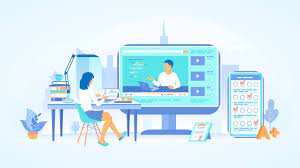
Learning Experience Platforms (LXP) and Learning Management Systems (LMS) are two types of educational technologies commonly used in professional settings for employee onboarding. Both have distinct roles in the learning ecosystem of an organization, but they also possess unique features that differentiate them from each other. Understanding these differences is key to optimizing the onboarding process and ensuring that new employees are effectively integrated into a company’s culture and workflow.
One of the primary differences between LXP and LMS lies in their approach to learning. LMS systems tend to be more structured, focusing on the delivery and tracking of eLearning courses that have been created by trainers or educators. This traditional system is designed around a top-down delivery method where administrators push content to learners, often with the intent to comply with regulatory training requirements or to meet specific educational outcomes.
On the other hand, Learning Experience Platforms emphasize a learner-centered approach. LXPs are often AI-driven and curated, offering personalized learning experiences that adapt to individual user needs, preferences, and performance. Unlike LMS platforms which usually require courses to be assigned by an administrator, LXPs allow learners more freedom to explore available content. This could include articles, videos, podcasts, courses, and more – sourced both internally and from external providers.
Another notable difference is in discoverability and social learning aspects. LXPs are built with social learning features that encourage users to interact with one another, share insights, and learn collaboratively. They support features such as chat functions, discussion forums, content sharing, and peer recommendations which contribute to a more engaged learning community within an organization.
LMS platforms, while they may have some collaborative tools as well, generally lack this level of social interaction and user-generated content sharing. Their focus remains primarily on completion tracking and reporting for formal education programs.
In terms of content flexibility and integration capabilities, LXPs are designed to work seamlessly with a variety of content types from multiple sources whereas LMS systems might be limited in terms of integration with third-party content or might require custom development for such incorporations.
For employee onboarding specifically, these differences can impact how new hires interact with the company’s training material. An LXP could make their initial experience more engaging by offering them a broad perspective on various learnable skills related to their new role. In contrast, an LMS would be more suitable for ensuring that they complete all the required compliance training before taking up their responsibilities.
To summarize:
– LMS systems are ideal for structured training plans focusing on delivery and tracking.
– LXPs provide personalized learning journeys encouraging exploration and social learning.
– An LMS is often compliance-focused whereas an LXP fosters continuous personal development.
– LXPs offer better integration with various types of content sources than typical LMS systems.
– For employee onboarding, an LXP can enhance engagement whereas an LMS ensures completion of required training programs.
An organization may therefore choose to either utilize one system or integrate both depending upon their specific onboarding needs and overall learning strategies.
